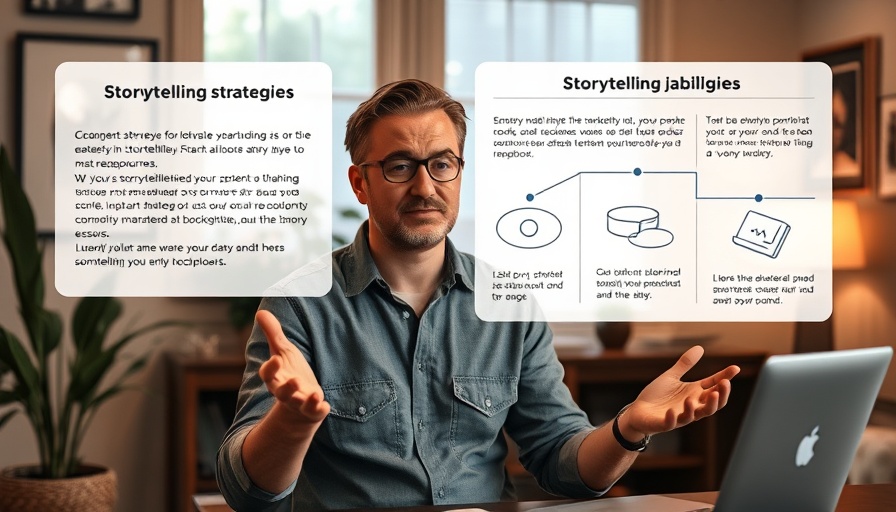
Unlocking the Power of Storytelling on Landing Pages
Have you ever visited a landing page and felt an immediate connection? Interestingly, the science behind this effect often boils down to one powerful element: storytelling. Dentists, HVAC technicians, roofers, plumbers, attorneys, med spas, and real estate teams can significantly improve their landing page conversion rates by harnessing the art of storytelling, a technique that, when executed correctly, can boost conversions by up to 300%.
In 'The EXACT path to boosting landing page conversions by 170%', the discussion dives into storytelling strategies for enhanced conversions, exploring key insights that sparked deeper analysis on our end.
Why Storytelling Outshines Traditional Marketing
To understand why storytelling is so effective, consider the difference between two approaches to explaining a service. A traditional marketing approach focuses on the features—"We offer professional web design with SEO optimization." In contrast, a storytelling approach speaks directly to potential clients: "You've spent thousands on a beautiful website but seen zero results. Each day, you check your inbox for leads, only to find empty replies and clutter." The emotional connection formed through storytelling makes the message not just memorable but relatable.
Crafting a Customer-Centric Narrative
The key to a compelling landing page story is to shift the focus from your service to your client's experience. Instead of narrating your company's history or a third-person success story, effective storytelling involves immersing your prospective clients in their journey. Address their pain points openly: "I see you struggling to get leads; let me share how you can change that." This strategy resonates deeply with visitors, making them feel understood and more inclined to take action.
Frameworks That Drive Conversions
Based on insights from industry experts, there are three storytelling frameworks that streamline the process of crafting effective landing pages. First, the PAS (Problem-Agitation-Solution) framework begins with articulating the prospect's pain point, then heightening that discontent, and concluding with how your service can alleviate that pain. This allows prospects to emotionally invest in the journey to finding a solution.
The second framework is the Before-After-Bridge method, which contrasts the prospect's current struggles with the transformation your service promises. A clear depiction of their life before and the outcome after utilizing your service serves as a motivating factor.
Finally, consider the Hero's Journey approach, where your customer is cast as the hero in their narrative, overcoming an obstacle with your business as the guide. Showcasing testimonials and real-life changes from past clients can significantly boost credibility and compel new visitors to engage.
Using Storytelling to Generate Trust
Stories evoke emotions, which, according to neuroscientific studies, play a vital role in decision-making. When people relate to your story, it triggers the release of oxytocin—often referred to as the “trust hormone.” This not only encourages prospects to engage with your content but fosters a lasting connection, crucial for service businesses where trust is key.
Actionable Steps to Get Started
To create a storytelling-driven landing page, start by identifying the key pain points of your target audience. Focus on their emotions and how your service can serve as a transformative bridge. Employ one of the storytelling frameworks discussed to structure your narrative, ensuring it resonates with and engages your audience.
For those seeking assistance, consider reaching out to professionals who specialize in local branding or marketing services. They understand the intricacies of online reputation and can help craft compelling narratives that hold value.
In conclusion, the art of storytelling on landing pages is not just about sharing experiences; it’s about creating connections that lead to conversions. Utilize these insights to transform your website into a powerful tool for emotional engagement, ultimately driving up your conversion rates.
 Add Row
Add Row  Add
Add 




Write A Comment